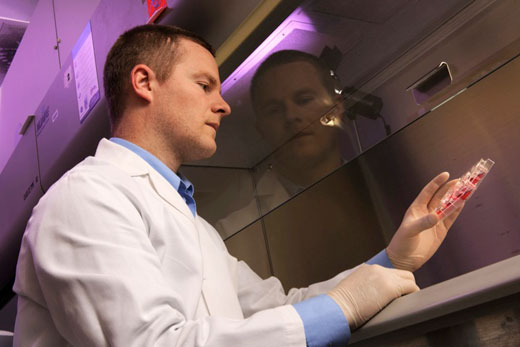The Scientist magazine has named Emory University the 12th best institution in the nation for postdoctoral research trainees (postdocs). Emory University employs more than 700 postdocs in the School of Medicine, Yerkes National Primate Research Center, Emory College, the Graduate School of Arts and Sciences, Rollins School of Public Health and Nell Hodgson Woodruff School of Nursing.
The ranking was based on responses to an email and web survey of readers of the magazine and web site registrants who identified themselves as non-tenured life scientists working in academia, industry or non-commercial research institutions. Responders included scientists from 45 U.S. and 10 non-U.S. institutions. The survey asked scientists to assess their working environment according to 38 criteria in nine different areas.
This year Emory was highly ranked in the categories of “facilities and infrastructure” and “training and mentoring.”
After receiving their PhD degrees, life sciences graduates often launch their research careers by working for several years as postdocs in the laboratories of established scientists. The total number of U.S. and visiting postdocs has tripled since 1983, now totaling well above 50,000.
"This ranking recognizes the excellent opportunities Emory provides for advanced scientific training,” says David Stephens, vice president for research in Emory's Woodruff Health Sciences Center. “Postdoc training is critical for the future of research in the United States, and our postdoc trainees are an essential component of strong research programs throughout Emory University.”
“Commitment to postdoc training and mentoring by Emory faculty and administrators is reflected in the high ranking in postdoc satisfaction through the years,” says Mary Delong, director of postdoctoral education for Emory University School of Medicine. “Emory’s advantages in training create a special place for postdocs to launch a future career.”
Results of the survey, and a look at some of the top 30 U.S. and top five International institutions are published in The Scientist, April 2012 issue and are available on The Scientist web site.

